Ominous October: I Saw What You Did (1965)
- Samantha Glasser

- Oct 4, 2024
- 6 min read
It's spooky season again. Join us for spine chillers from yesteryear this month.
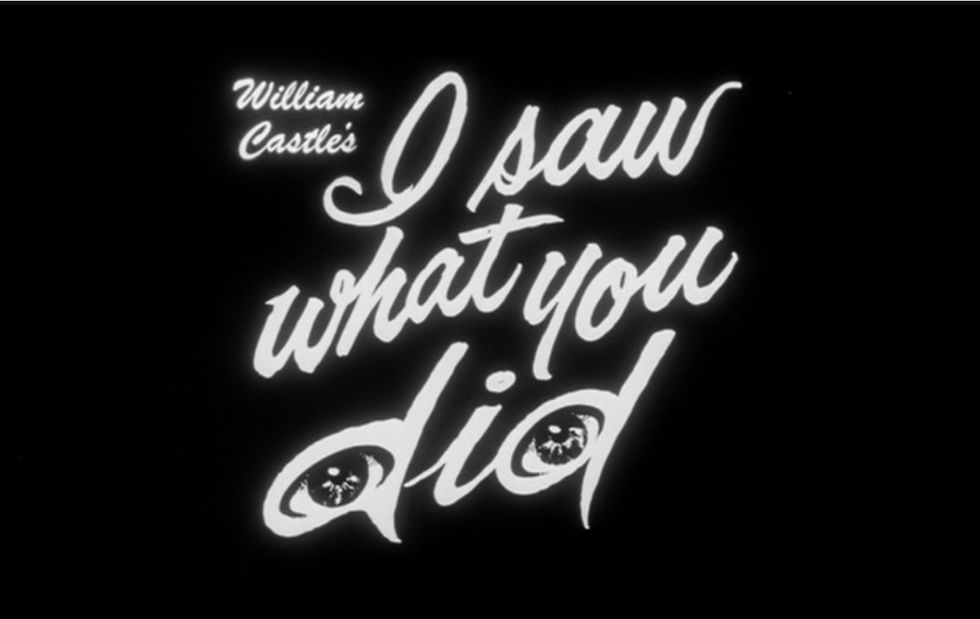
RODNEY BOWCOCK: A couple of teenage girls, Libby and Kit (Andi Garrett and Sara Lane), find themselves home alone with Libby’s little sister, Tess (Sharyl Locke) and decide to pass time by making prank phone calls, eventually telling those who pick up the phone, “I saw what you did…and I know who you are." As fate would have it, one of those who answer the phone is Steve Marak (John Ireland), who has just murdered his wife and buried the corpse in a shallow grave. Steve’s neighbor Amy (Joan Crawford) is in love with him and attempts to blackmail him into marrying her after she discovers the evil deed that he committed. Amy’s affection provides a roadblock in Steve’s need to find out just what the caller knows and how to keep her quiet.

SAMANTHA GLASSER: Just when you think the plot is resolved, some other twist revives the danger. There are also red-herrings to throw you off the resolution. William McGivern adapted Ursula Curtiss's novel to a script which is tight and creative. He wrote novels of his own which were adapted to film including The Big Heat and Rogue Cop.
RB: McGivern had a knack for weaving complicated stories, probably thanks to his background in writing pulp stories, which I often find to be delightfully fun and also incredibly confusing. This film has a way of toying with the audience, as there are so many moments of suspense and danger sprinkled throughout the film. It’s a real rollercoaster ride.
SG: Prank phone calls were a fun part of sleepovers. I would sit there trying to hold it together while my friend laughed with silent hysteria next to me. I'd pretend I was calling the radio station to request a song. I remember once getting a foreign voice on the line, repeating over and over again, "Hello? Hello? Hello?" and wondering how long to keep the game going. There were times my friend would dial and I'd wonder which one of our crushes she was calling. This was in the days when you memorized phone numbers, after all, and everyone was in the phone book. We usually weren't that sophisticated and would just dial random numbers. Of course, the recipient of such calls could always call *69 and tell our parents what we were doing, but I don't remember that feeling like an imminent threat. It was a pastime we didn't take up very often, but when we did, it as a riot, and something my kids will never experience.
RB: It’s always amusing for me to think of people so concerned with maintaining anonymity in the 21st century, when it wasn’t so long ago that every home was given an actual book with (almost) everyone’s names and addresses in your area. We always considered those that had unlisted numbers as being peculiar or maybe even paranoid. Now we’re all that way.

SG: I've seen children's addresses listed in newspaper articles. Craziness. I did think it was charming and quaint that when Tess pretended to be a little girl trying to call her mom at the movie theater for a ride home, the woman actually called their house to let the mother know. I felt a sense of community spirit that doesn't exist in the same way now. People are much more suspicious of each other.
At first, I was surprised the parents were afraid to leave their teenaged daughter home alone with her little sister overnight. It seems to be that a girl old enough to drive could keep herself out of trouble for 24 hours. However, Libby's behavior was immature compared to modern kids, and the parents obviously haven't drilled safety information or stranger danger into their children. Little Tess invites a strange man into her house in the middle of the night without blinking an eye.
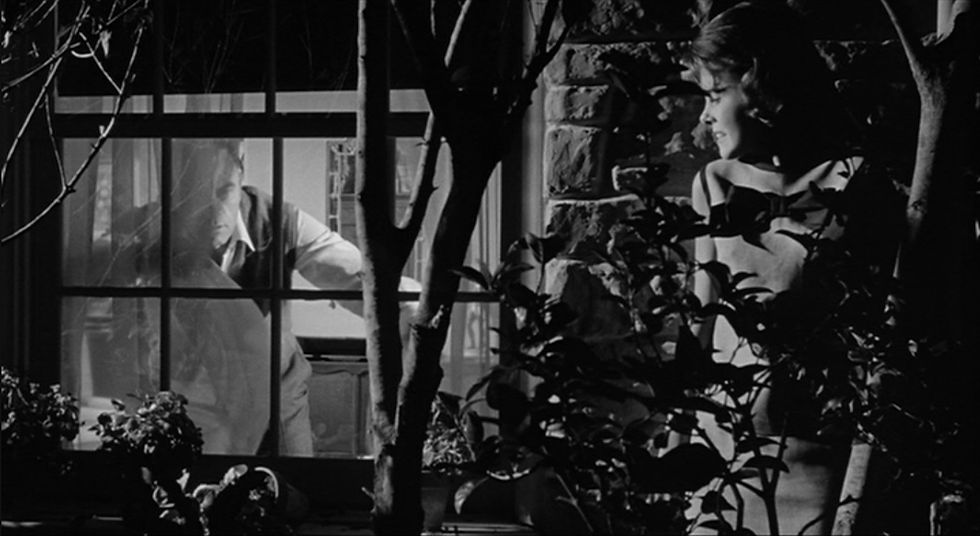
RB: I certainly didn’t consider Libby to be a “typical” teenager, even for the time period. It seemed to me that her parents knew she couldn’t be trusted. She plays a good counterpart to the more sensible Kit. I can’t really deny the peculiarity of the uber-trusting Tess inviting Steve into the house, whom she had not seen at all, especially in the middle of the night, but it certainly wasn’t unusual when I was growing up for our home to be visited by an array of religious zealots, political canvassers, and salesmen ranging from encyclopedias to frozen food. I don’t recall ever being told not to answer the door for these people, just to be polite and keep them busy until my mom could come to the door (and yes, I realize that my example was based on my mom always being somewhere around; I’m not sure that I was permitted to stay home with my brother at). Again, times have changed and we’re a more insular society than in decades past.
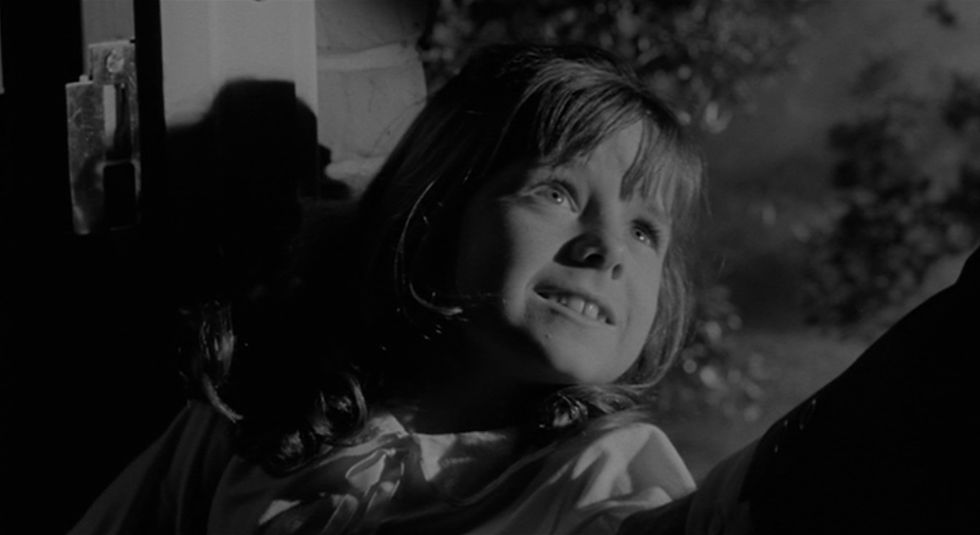
SG: The reason this movie is so intense is because the potential victims are completely innocent bystanders who accidentally happen upon a murder. We relate to their peril. Garrett and Locke do an excellent job of creating characters with depth that we care about.
RB: The film has an interesting look, not particularly dissimilar from the appearance of Universal TV shows in the mid-60’s; a low budget sheen. There is also a peculiar use of music in the film that is unsettling. I watched this film years ago with a group of friends and we were all unsettled by the jaunty sitcom theme styled score that would repeat multiple times as the kids were spiraling into peril and danger. On a second viewing, I found that it somehow added to the suspense. This was only increased because of the completely striking resemblance that little Tess has to my wife when she was about that age. I found myself extremely annoyed when Libby would harass her and then later, very shaken as the child was put in danger.
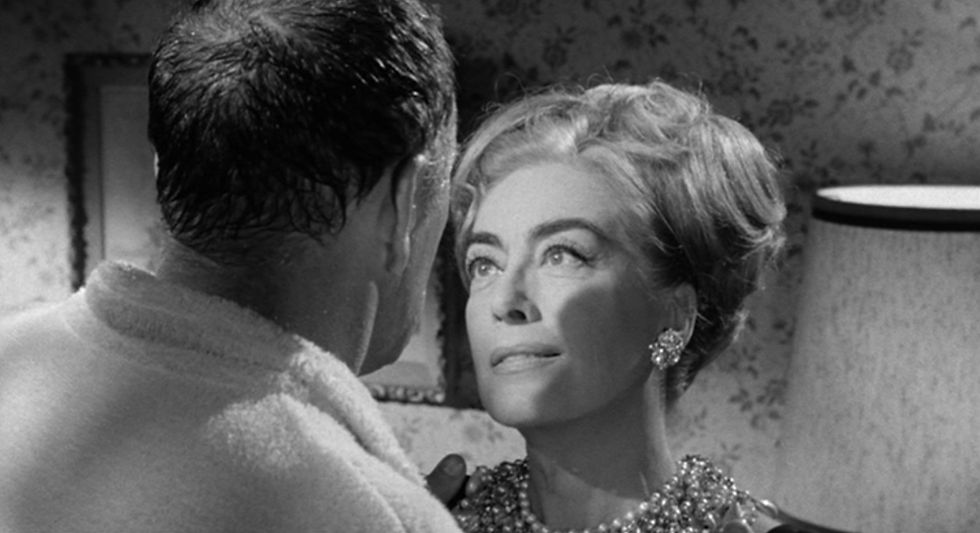
SG: Yes, I am much more sensitive to children in movies now that I have some of my own. A lookalike would make it even worse. I noticed the sitcom music too and I think it lulled me into a false sense of security, like there wasn't any real danger, and that everything would work out okay.
Joan Crawford is extremely glamorous as the amorous next-door-neighbor. It doesn't make much sense that she would just be lounging at home in an incredible jeweled bib, little black dress and complicated updo, but since Crawford supplied her own wardrobe and prattled on and on at book length about the importance of appearances in her 1971 book My Way of Life, it must not have been illogical to her. She looks great, and earns her star billing. These late Joan Crawford movies have a terrible reputation, but so far, we've had two hits with Strait-jacket and I Saw What You Did, although I have to admit I haven't seen Trog.
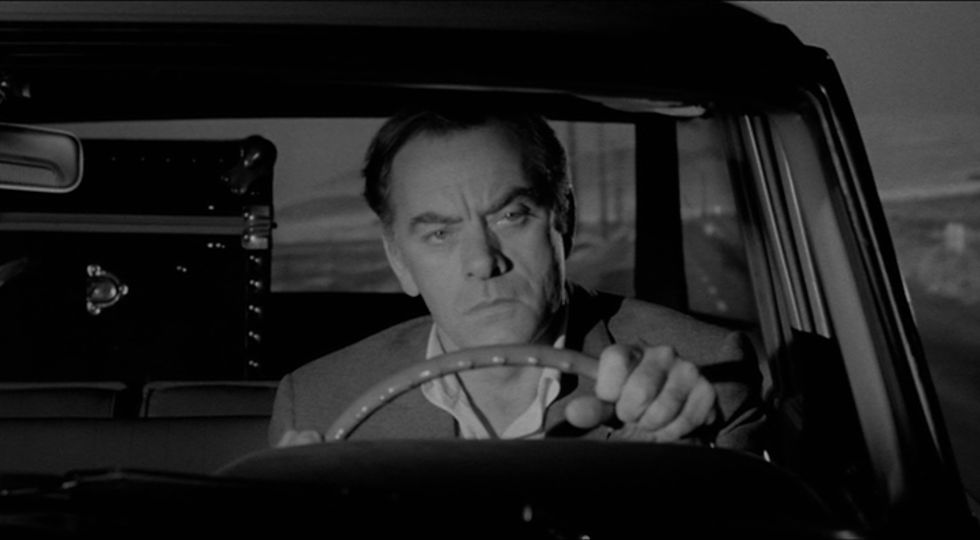
RB: In spite of the top billing, Crawford’s role is at best a supporting role, and really she appears in the film far less than the kids do. I’m sure that her appearance added some box office appeal, although it seems that in short order the film was relegated to double and triple features at drive-ins billed with Elvis movies and Disney live-action kiddie features.
SG: Although this is a William Castle film, there were no major gimmicks used to sell it. He attempted to install phones in the lobby of a movie theater where someone would answer with "I Saw What You Did," but the phone lines got disrupted and the idea was scrapped. Instead, he premiered the film in Minnesota where he had lunch with contest winners, did radio publicity, and attended screenings.

RB: The publicity makes a big deal that the film is about uxoricide and in one of his less inspired attempts at a gimmick, Castle suggested a campaign for “Buckle Up For Terror”, where a ‘special shock section’ of the theater would be set aside and the seats would have seatbelts installed for those patrons that would be “scared out of their seats.” The pressbook also notes that a Decca single of the theme song by a group called The Telltales had been released. Can’t imagine that being a big hit.
SG: This is a well-paced, exciting movie about a relatable scenario. Four stars.
RB: This isn’t a perfect movie, but it’s quirky and quite suspenseful with a goodly bit of influence from Psycho. I was shocked at how much it affected me. Four stars. Completely recommended.




Comments